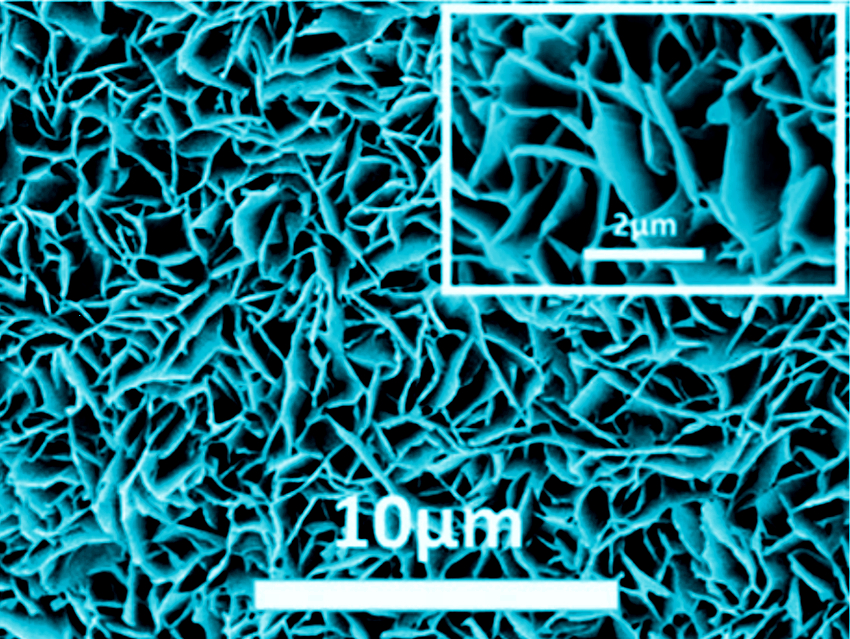Supercapacitors can charge and discharge much faster than conventional batteries. However, the energy density of available supercapacitors is relatively low compared to batteries. High-performance electrode materials could help to improve these energy densities. Metal-organic frameworks (MOFs) are porous organic–inorganic hybrid materials that could be useful in electrode materials. They have pores and channels that can accommodate electrolyte ions and metal centers that can take part in redox reactions. However, most MOFs suffer from low electrical conductivity and a lack of chemical stability for electrochemical applications.
Hongjing Wang, Yadong Yao, Sichuan University, Chengdu, China, and colleagues have developed an Mn-doped ultrathin Ni-MOF nanosheet array on nickel foam (Mn0.1-Ni-MOF/NF) that can serve as a positive electrode for supercapacitors. The team first synthesized a manganese-nickel layered double hydroxide (LDH) on nickel foam (MnNi‐LDH/NF) from Ni(NO3)2 and MnCl2. This precursor was then solvothermally transformed into the desired Mn0.1-Ni-MOF/NF, using p‐benzenedicarboxylic acid as an organic linker.
Scanning electron microscope (SEM) measurements showed that the Mn0.1-Ni-MOF forms arrays of nanosheets (pictured) that uniformly coat the nickel foam substrate. An asymmetric supercapacitor device with Mn0.1‐Ni‐MOF/NF as the positive electrode and activated carbon as the negative electrode showed a high energy density and good cycling stability, with a capacitance retention of 83.6 % after 5,000 charge/discharge cycles. Based on this work, LDHs could be useful starting materials for the fabrication of MOF nanoarrays for various applications.
- Ultrathin Mn Doped Ni‐MOF Nanosheet Array for Highly Capacitive and Stable Asymmetric Supercapacitor,
Dengchao Zheng, Hao Wen, Xun Sun, Xin Guan, Jie Zhang, Wenli Tian, Hao Feng, Hongjing Wang, Yadong Yao,
Chem. Eur. J. 2020.
https://doi.org/10.1002/chem.202003220




